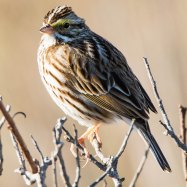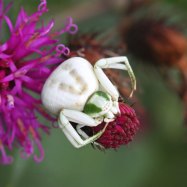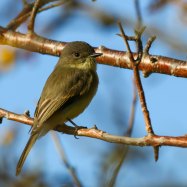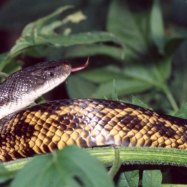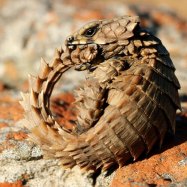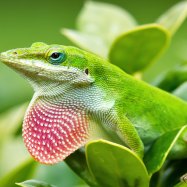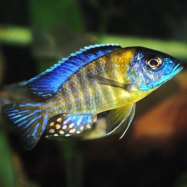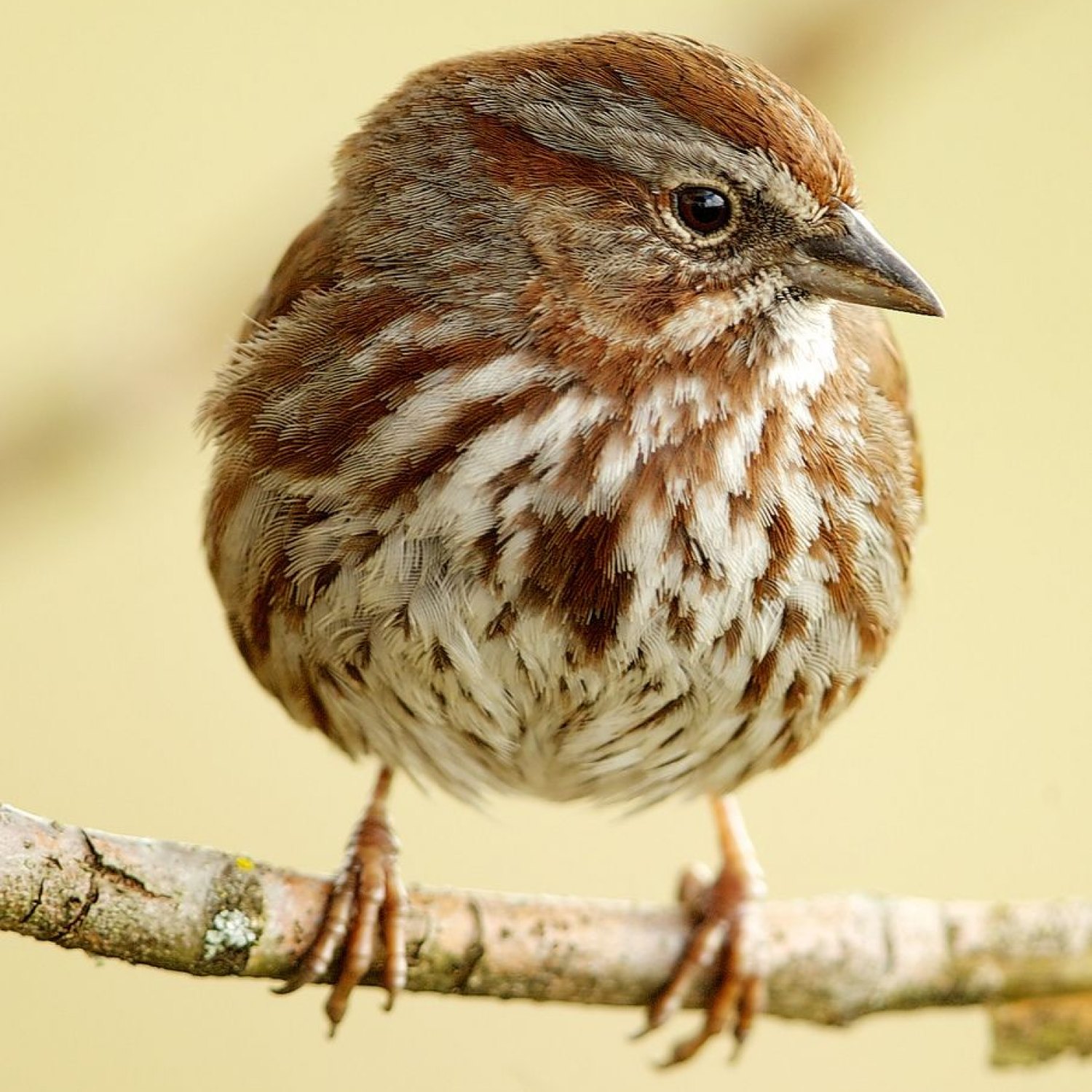
Song Sparrow
15-18 cm (5.9-7.1 in)
The Song Sparrow, known for its melodious song, is a small and chunky bird found throughout North America. With a length of 15-18 cm, it is a member of the Passerellidae family and can be easily spotted in parks and gardens. Listen closely next time you're on a walk to hear the beautiful tunes of the Song Sparrow. #SongSparrow #NorthAmericanBird #NatureSounds
Animal Details Summary:
Common Name: Song Sparrow
Kingdom: Animalia
Habitat: Marshes, wet grassy areas, and brushy habitats
The Melodic Sparrow: A Fascinating Bird of North America
When you think of North American birds, a few common species might come to mind – blue jays, cardinals, or perhaps robins. But there is one bird that often goes unnoticed, despite its beautiful song and interesting characteristics – the Song Sparrow. This small brown bird, scientifically known as Melospiza melodia, may not stand out in terms of color or size, but its unique features make it a fascinating subject for bird enthusiasts and researchers alike.The Song Sparrow is a member of the class Aves, the order Passeriformes, and the family Passerellidae Song Sparrow. Its name comes from its distinct, melodious song that can be heard throughout its range in North America. It is a year-round resident in most parts of the continent, making it a familiar sight in parks, gardens, and suburban areas. Let's dig deeper into the world of this small but mighty bird and uncover its interesting features.
Appearance and Habitat
As mentioned, the Song Sparrow is a small bird, measuring only 15-18 cm (5.9-7.1 in) in length. Its body shape is described as "small and chunky," with a round head, short tail, and thick bill. Despite its small size, it has strong legs and feet, which aid in its ground-foraging method of feeding.
One of the distinctive features of this bird is its coloration Shiloh Shepherd. Its upperparts are a warm brown, while its underparts are streaked with brown and white. This coloration helps it blend in with its surroundings, making it less noticeable to predators. However, in the right lighting, the Song Sparrow's feathers can take on a beautiful reddish hue.
As for its habitat, the Song Sparrow can be found in various locations throughout North America. Its preferred habitats include marshes, wet grassy areas, and brushy habitats. It is also commonly found in gardens, parks, and other urban areas, as long as there is suitable shrubbery for it to hide and forage in. This adaptability to different habitats is one reason why this bird is so widespread.
Feeding Habits
The Song Sparrow is an omnivorous bird, meaning it eats a variety of both plant and animal matter. Its diet consists mainly of insects, seeds, and berries. However, it has also been observed to eat small vertebrates such as salamanders and young birds. This adaptability in its diet helps the Song Sparrow survive in different habitats and times of the year when food sources may be scarce.
The bird's feeding method is also intriguing – it is a ground-forager, meaning it searches for food on the ground rather than in trees or bushes. It uses its strong legs to hop and scratch at the ground, seeking out insects and seeds. This method requires excellent eyesight and quick reflexes, as the Song Sparrow needs to be aware of any potential predators while foraging.
Geographical Distribution
The Song Sparrow is native to North America and can be found throughout the continent, with the exception of the far northern regions. Its range extends from the eastern region of the United States to the west coast, and as far north as central Canada. It is a year-round resident in most parts of its range, although some populations migrate short distances during the colder months.
Within its range, the Song Sparrow may also have differences in appearance and behavior. For example, the ones found in the western region of its range tend to have darker coloration compared to those on the east coast. This variation is known as geographic polymorphism and is often seen in other bird species as well.
Conservation Status
The good news for bird enthusiasts and researchers is that the Song Sparrow has a stable population and is not listed as a species of concern. Its adaptability to different habitats and its widespread range make it less susceptible to threats. However, as with all birds, it does face certain challenges, such as habitat destruction and pollution.
To help ensure the continued success of the Song Sparrow, it is important to preserve and protect its habitats, especially wetland areas, from development and pollution. Also, practices such as keeping gardens and backyards free of pesticides can benefit not only Song Sparrows but all bird species.
The Song Sparrow's Song
One of the most intriguing aspects of this bird is, as its name suggests, its melodic song. Each male Song Sparrow has its unique variation of the song, and it uses this to attract a mate and defend its territory. The song consists of a series of notes, quickly followed by a trill, all in various pitches. The exact melody of the song can even vary between different populations of Song Sparrows, adding to the uniqueness of this bird.
But the song is not just for attracting a mate; it also serves a more practical purpose. The Song Sparrow uses its song to establish its territory within a group of other sparrows. By singing its unique song, it can signal to other birds that it has a claim on a particular area, reducing potential conflicts and competition.
The Connection with Humans
The Song Sparrow may not be as popular or recognizable as other birds, but it has undoubtedly made its mark in human culture. It has been mentioned in literature and songs, with its melody often representing the sounds of nature. In Native American cultures, this bird is a symbol of creativity, adaptability, and community.
In addition, the Song Sparrow has also played a role in scientific research, particularly in the field of animal communication. Its unique song and variations have been studied by researchers, providing insight into the mechanisms and functions of animal communication. The bird's adaptability and widespread range also make it an excellent model for studying the effects of habitat fragmentation and degradation on bird populations.
In Conclusion
In summary, the Song Sparrow may be small and unassuming, but it is a bird worth noticing. From its unique coloration and feeding habits to its melodic song and adaptability, this bird has many interesting features to explore. It is a reminder that even the smallest among us can have a significant impact, both in the natural world and in human culture. So, the next time you come across a charming little bird with a beautiful song, remember the Song Sparrow and its fascinating story.

Song Sparrow
Animal Details Song Sparrow - Scientific Name: Melospiza melodia
- Category: Animals S
- Scientific Name: Melospiza melodia
- Common Name: Song Sparrow
- Kingdom: Animalia
- Phylum: Chordata
- Class: Aves
- Order: Passeriformes
- Family: Passerellidae
- Habitat: Marshes, wet grassy areas, and brushy habitats
- Feeding Method: Omnivorous
- Geographical Distribution: North America
- Country of Origin: United States and Canada
- Location: Throughout North America
- Animal Coloration: Brown upperparts, streaked brown and white underparts
- Body Shape: Small and chunky
- Length: 15-18 cm (5.9-7.1 in)
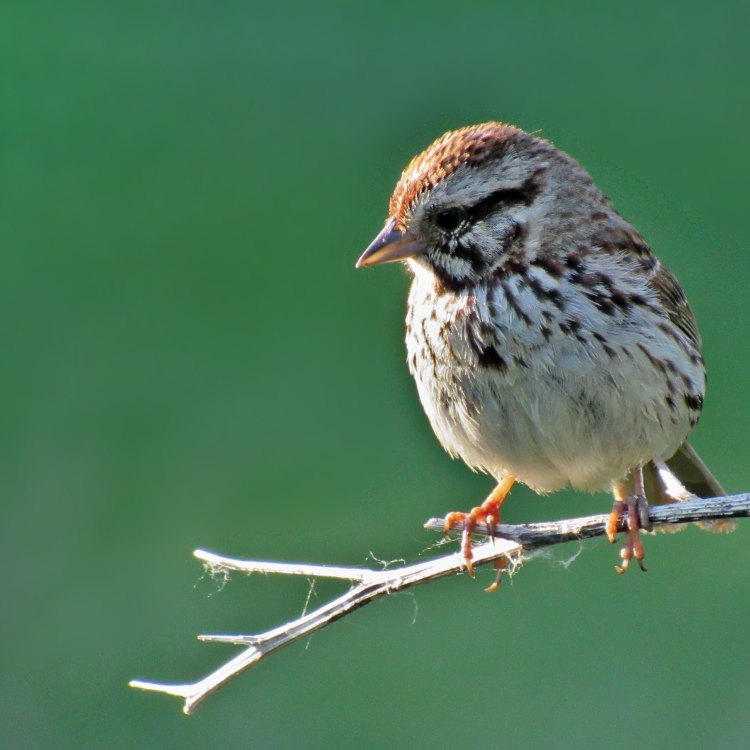
Song Sparrow
- Adult Size: Small
- Average Lifespan: 2-4 years
- Reproduction: Sexual
- Reproductive Behavior: Monogamous
- Sound or Call: Melodious song with varied trills and whistles
- Migration Pattern: Partially migratory
- Social Groups: Solitary or in pairs
- Behavior: Active during the day
- Threats: Habitat loss, predation, and climate change
- Conservation Status: Least Concern
- Impact on Ecosystem: Seed dispersal
- Human Use: Popular bird for birdwatching
- Distinctive Features: Long tail and dark streaks on the breast
- Interesting Facts: Each Song Sparrow has its own unique song
- Predator: Birds of prey, snakes, and mammals
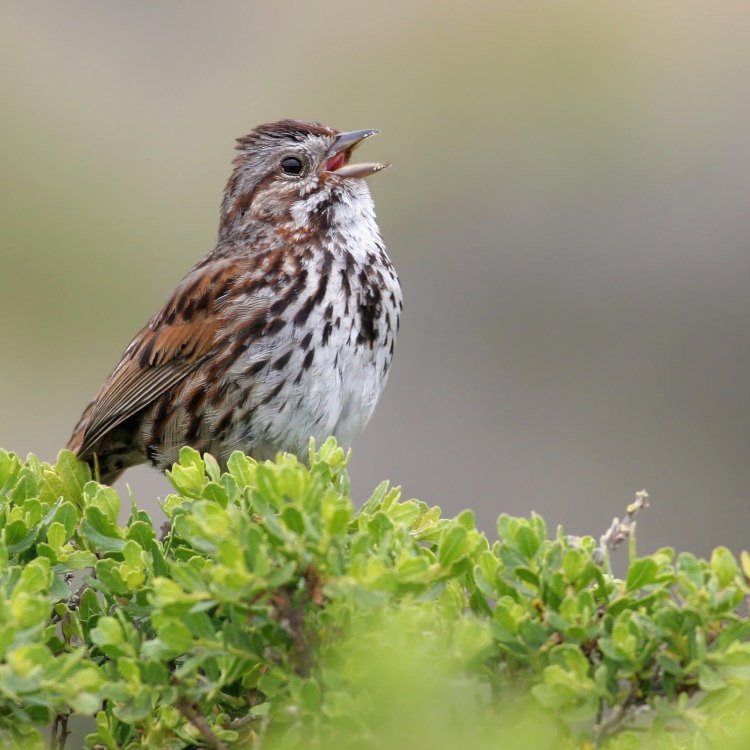
Melospiza melodia
The Musical Song Sparrow: A Tiny Bird with a Big Impact
The Song Sparrow, scientifically known as Melospiza melodia, is a small but mighty bird that is found throughout North America. These tiny birds may not be the flashiest creatures in the avian world, but they are certainly one of the most fascinating. From their distinctive melodious song to their unique behaviors, the Song Sparrow is a species that warrants closer attention.Adult Song Sparrows measure around 5-7 inches in length and weigh between 25 to 40 grams, making them one of the smaller birds in North America PeaceOfAnimals.Com. They have a brown and white speckled coloring, with a long tail and dark streaks on their breast. While their size may be small, these birds are active and energetic, living up to their name with their musical performances.
The average lifespan of the Song Sparrow is only 2-4 years, but in that short time, they make a significant impact on their ecosystems.
Reproduction and Reproductive Behavior
Like most birds, Song Sparrows reproduce sexually. During the breeding season, which typically begins in April, the males will establish their territories and attract a mate through their beautiful singing. Their unique songs have been compared to that of a flute, with a medley of trills and whistles. Interestingly, each Song Sparrow has its own unique song, and it can vary between individuals.
Once the female selects a mate, the pair becomes monogamous and stays together throughout the breeding season, which usually lasts until August. They will build their nest on or near the ground, using grasses, twigs, and other materials Southern Hognose Snake. The nest is then lined with feathers and soft materials, creating a cozy and safe space for their eggs.
Song Sparrows typically have two broods per breeding season, with an average of three to five eggs per brood. The female takes on most of the incubation duties, lasting around 12-14 days, while the male will bring food to her. Once the eggs hatch, both parents will feed and care for the chicks until they fledge after 11-13 days.
Sound or Call
One of the most distinctive features of the Song Sparrow is its beautiful and varied song. As mentioned previously, each bird has its unique song, allowing individuals to differentiate themselves from others. These songs are not just for mating purposes; they also serve as a form of communication between individuals and can change depending on the context.
Besides their songs, Song Sparrows also have a range of calls that they use for different purposes. These calls include a sharp chip note to alert other birds of potential danger, a long trilling call during courtship displays, and a rapid staccato call when they feel threatened.
Migration Pattern
Song Sparrows have a partially migratory pattern, meaning that some individuals will migrate during the winter while others may stay in their breeding grounds year-round. This behavior is often influenced by the availability of food and nesting sites.
In the northern parts of their range, Song Sparrows are usually migratory, while those in the south may stay resident year-round. However, even in areas where they migrate, some Song Sparrows may choose to stay behind, forming small winter flocks.
Social Groups and Behavior
Song Sparrows are primarily solitary or found in pairs, except during the breeding season. Their territories can range from 1 to 4 acres, and they can become aggressive and territorial if another bird enters their space. However, outside of the breeding season, these birds may loosely flock together in search of food.
They are active during the day, spending most of their time foraging and singing. Song Sparrows have a varied diet, eating mostly insects during the breeding season and switching to seeds and fruits in the winter. They have short, conical bills that are perfect for cracking seeds and insects.
Threats and Conservation Status
The Song Sparrow is listed as Least Concern on the IUCN Red List, with a stable population estimated at 30 million individuals. However, this does not mean they are not facing threats that could impact their future.
One of the main threats to Song Sparrows is habitat loss. As humans continue to develop and urbanize areas, natural habitats for these birds are diminishing. This loss of suitable nesting and foraging sites can lead to a decline in their populations.
Another threat to Song Sparrows is predation. Hawks, owls, and other birds of prey often prey on Song Sparrows. Mammals like cats and snakes, as well as larger predatory birds, can also pose a risk to these small birds.
Climate change is another significant threat to the Song Sparrow. As temperatures rise, it can alter the habitats these birds rely on, making it more challenging to find food and suitable nesting sites. Climate change can also shift the timing of the breeding season, causing disruptions in their reproductive success.
Impact on Ecosystem
Song Sparrows may be small, but they play a significant role in their ecosystems. Their love for seeds and fruits makes them valuable seed dispersers, aiding in maintaining plant diversity and regeneration. They also eat insects, keeping populations in check.
Human Use and Interesting Facts
The Song Sparrow may not be a popular choice for pets, but they are a favorite among bird watchers. They are widespread and easy to spot, making them a popular attraction for birding enthusiasts. Their melodious songs and unique behaviors also make them a fascinating subject to observe and learn about.
Besides their impact on humans through birdwatching, Song Sparrows have also been featured in literature and music, with their songs inspiring poets and musicians alike. In the book "Song Bird," author Anne Lamott writes, "Song sparrows' songs emerge from the thicket, and are the saddest, most beautiful sound I know."
One interesting fact about Song Sparrows is that they have been known to reuse old bird nests. They are also known to use other birds' nests, including those of American Robins and Gray Catbirds, to save time and energy during the breeding season.
Predators
Like most birds, Song Sparrows have a range of predators that threaten their survival. Birds of prey, such as hawks, owls, and falcons, are known to hunt Song Sparrows. Snakes and ground-dwelling mammals, such as cats, can also pose a risk to these small birds.
Conclusion
In conclusion, the Song Sparrow may be a small and unassuming bird, but it has many unique features that make it a significant player in its ecosystem. From their melodious songs and distinctive appearances to their impact on seed dispersal, these tiny birds have a big impact. While they may face threats such as habitat loss and predation, their stable population and resilience to change give hope for the future of this musical species. So next time you hear the beautiful song of a Song Sparrow, take a moment to appreciate this small but vital bird in our environment.
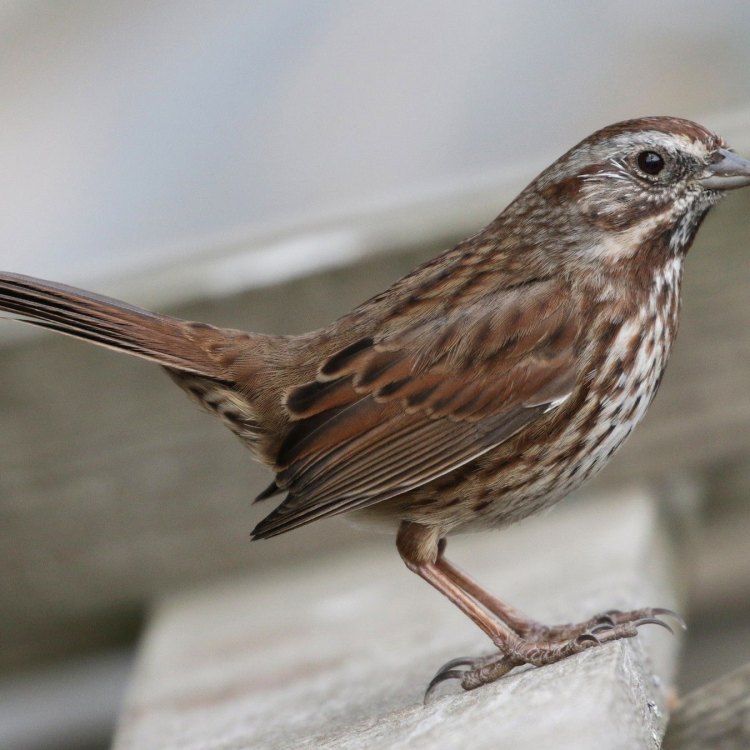
The Melodic Sparrow: A Fascinating Bird of North America
Disclaimer: The content provided is for informational purposes only. We cannot guarantee the accuracy of the information on this page 100%. All information provided here may change without prior notice.

